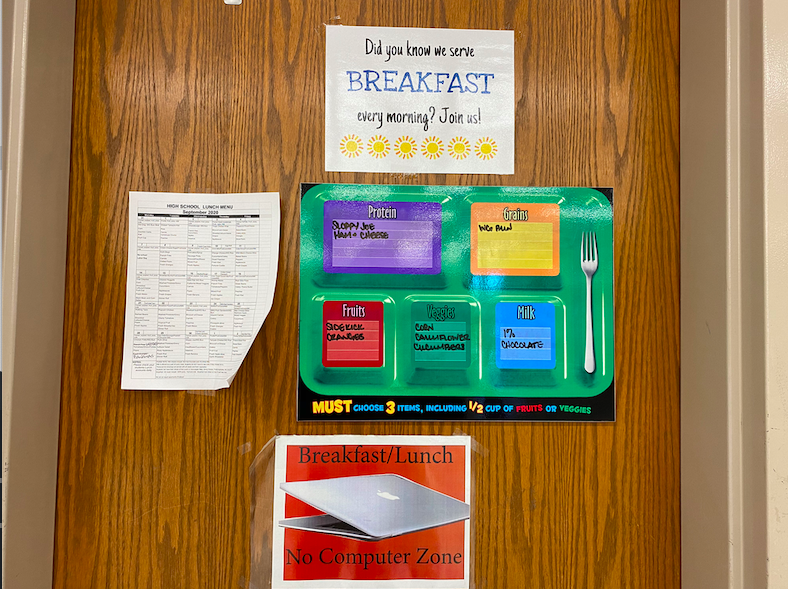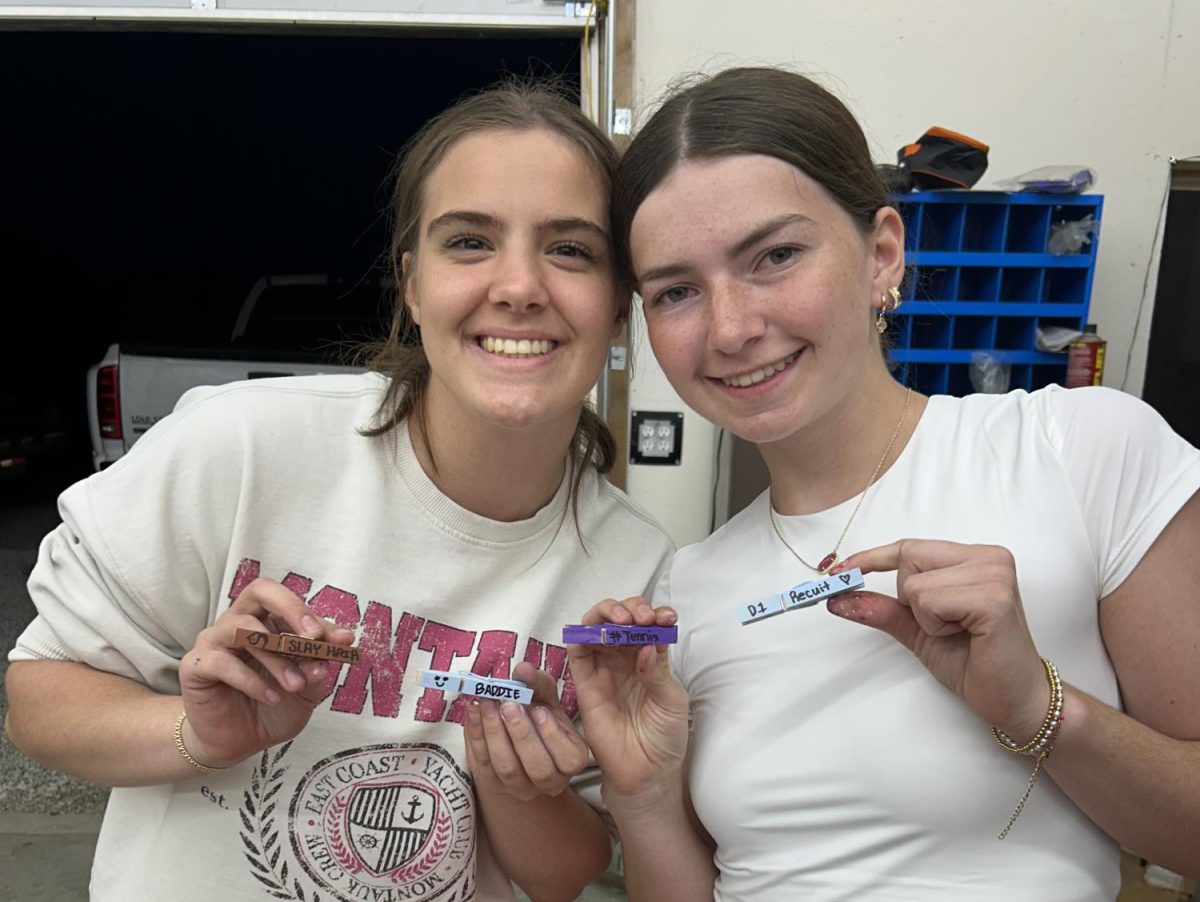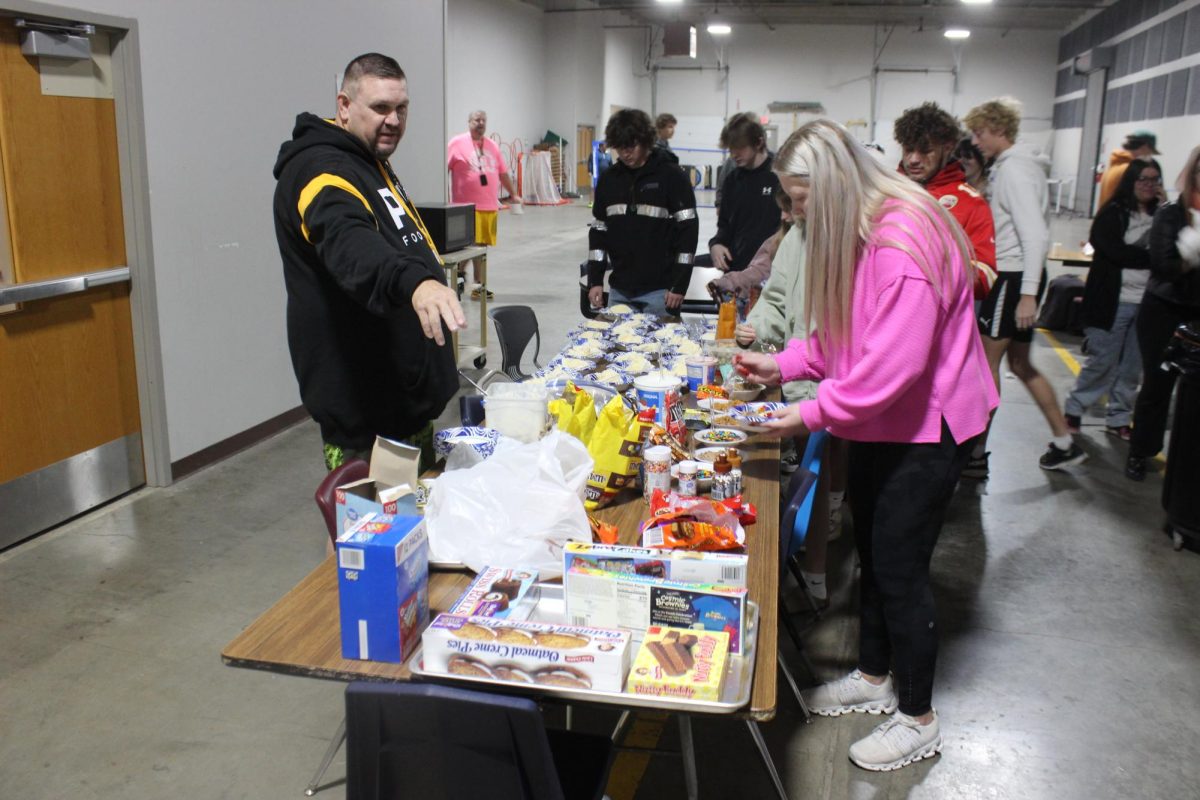Exploring the World of Diversity in School Lunch
Students wonder if school meals should be inspired by different places around the globe.
Signs hang on the door while students stand in line to get lunch. All students will receive free lunch until Dec. 31 or funds run out.
February 25, 2022
School lunch is something many students dread. The repeating food menu of greasy, seemingly unappealing food is starting to become a concern for parents. Many of the school’s lunch menus are considered rather simple, with the choice of ham and cheese, hot dogs, pizza, or other Americanized dishes.
Schools in the surrounding area have started introducing different foods into their lunch menu. They are introducing more cultural foods to accommodate their students. This is something that is not just happening locally. Schools around the United States are joining the bandwagon. Lewiston Public Schools in Maine is making great efforts to serve more fruit, grains, and significantly less pork, and more vegetarian options to accommodate their Muslim population. Minneapolis Public Schools in Minnesota have developed a thing they call “ethnic bowl stations”.
These “ethnic bowl stations,” feature a wide range of whole grains, vegetables, and flavoring toppings. These are there to represent the flavor profiles of many international cuisines to others. Something like this would be easy to fit into any school’s lunch system. Because they do not have to be super complex, it could be something this is really simple to make. Atlantic High School lunch personnel Laura Namanny said, “I think it would be cool if we had more cultural dishes. Sometimes, though, we run into issues with availability or nutritional guidelines.”
On the other hand, in New Jersey, “Making vegetarian, vegan, kosher, halal and other cultural dietary options can increase the likelihood that students will eat the food on the menu and help ensure that the School Nutrition Programs reach their intended goal,” said Gabriela Mosquera.
Schools around the United States are starting to implement these dietary changes, and some of the students are rooting for these changes to happen as well. Freshman Bre Waldmann said, “The food here is just not that good, so most of the time I just bring my lunch.” Another student said, “We don’t have a lot of options other than sides.” Atlantic FCS Teacher Rebecca Wallace said, “I want to encourage students to try [new foods].” Ms. Wallace also teaches an international foods course, where they cook foods from around the globe. “It expands people’s food habits, and it helps that they make the food in class.” Wallace said, “They could become more interested in trying food from those different cultures”. Putting cultural foods into school’s lunch systems would help these kids better understand their peers’ cultures. It could also help them expand their food gallery, and even introduce healthier options.









